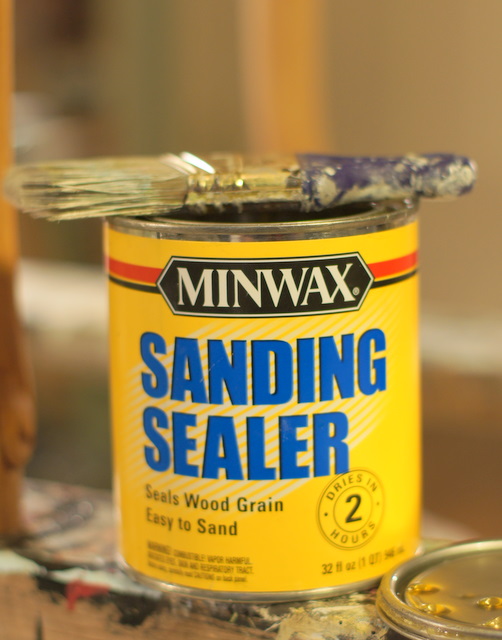since a recent mention, several lovely readers have inquired about the use of sanding sealer, and i am happy to share the bit i know.

sanding sealer is a petroleum-based product that can be used as a first (and second) coat on furniture and cabinets. as you know, it’s especially important to seal new wood and mdf pieces (which will absorb the water in acrylic products, and break your heart!) before painting…jobs which can also be done with primer. the differences? sanding sealer goes on more smoothly, leaving no brushmarks and raising far less grain, which is key for certain finishes. and, when doing any rubbing-back or distressing, primer would be revealed beneath the layers of paint. sanding sealer dries clear, leaving your project protected, but without telltale white or gray showing through. sort of like spanx vs. undies.
when sealing the bottom of new furniture, or the inside of a cabinet or drawer, my favorite technique is two layers of sealer – sanded and tacked in between coats – followed by two layers of minwax polycrylic, in satin.
Lauren says
spanx vs undies, i love it!
BoxwoodTerrace says
Gee, I feel like this post was just for me (kidding!). Thanks for the tip. I have not started my painting project yet, but hope too soon.
Deborah
catherine says
LOLOL, spanx v. undies! And I did not know that about MDF,
Cat
catherine says
Wait, you can put a waterbased poly over this?
stephanie says
dear cat, you raise excellent points as always! yes, you can use a water-based poly and/or waterbourne paints over sanding sealer! yay! it behaves like an oil-based primer in that regard, giving “tooth” and a good bonding surface. and, yes…mdf is wonderful stuff for carpenters, but it will absorb water like a sponge, and “bloom”. often you’ll see older mdf pieces (especially cabinets) that have been covered with a veneer and have been damaged by water…the mdf looks like cauliflower and the veneer peels off…yuck. so sealing mdf is super-important. xox